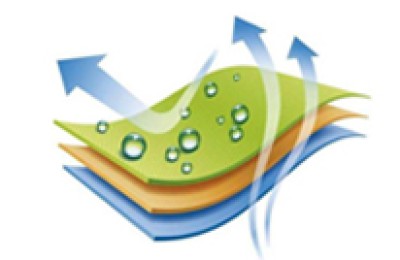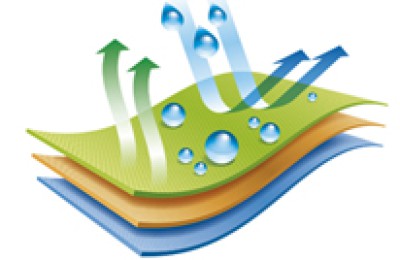When I visited the market at the end of last year, words like “the worst market year since I started in the industry” were mentioned by most cloth bosses. Most of them maintain an optimistic attitude towards the new year.
After all, the market situation in 2019 was bad enough, and it should rebound a little in the new year.
was gradually brought under control, and when the textile people were preparing to show off their skills, the epidemic abroad began to spread, and the market improvement became elusive.
How is the market going this year? Compared with last year’s so-called “cold winter in the textile industry”, cloth bosses may have a more intuitive feeling.
The peak season is not about whether it is prosperous or not, but Is there any
It is already mid-March. March and April are the traditional peak seasons for the textile industry in the first half of the year. There have always been “gold and three silver” Four” title.
However, last year’s “Gold, Three, Silver and Four” disappointed textile people. Due to the impact of Sino-US trade, overcapacity and other reasons, the entire peak season only lasted until mid-to-late April, half a month earlier than in previous years. This was the beginning of high inventory for weaving companies.
But the market situation in the first half of this year seems to be worse than last year. With the continuous spread of the epidemic abroad, orders from not only the United States, but also Europe, Japan, and South Korea have been affected. This has had a huge impact, and foreign trade companies frequently receive chargeback notices.
Judging from the current situation, foreign trade orders will not be counted on for a while. The only thing we can count on is domestic trade picking up, but judging from the total volume , is bound to fall, and it is still unknown whether there will even be a peak season in the first half of the year.
It is difficult to get rid of inventory, and weaving companies have cash The flow has further deteriorated
Last year, because the inventory of weaving companies was too high and occupied too much cash flow, the phenomenon of dumping and dumping goods occurred frequently in the market. Suppressed cloth prices.
But if we turn the time back to the first half of the year, except for some textile companies investing in peripheral areas, after experiencing the “explosion” market in 2018, most of them The cash flow of some companies is relatively healthy.
This year, it’s just the opposite. After work resumed, the orders accumulated last year only kept the market hot for about a week, and only a small part of the gray fabric inventory was removed. While inventories are still at high levels, the cash flow situation of weaving companies is far worse than that of the same period last year.
The epidemic is spreading and market confidence is generally insufficient
Market confidence may seem illusory, but its impact on an industry can be said to be decisive.
Market confidence is determined by past market conditions and next expectations. However, from these two aspects, the future of the textile industry still seems to be dominated by negative news.
Looking from the past, at the end of 2019 and the beginning of 2020, due to overcapacity and the impact of the domestic epidemic, the inventory of gray fabrics in textile companies was high, and the number of orders fell significantly. People have pinned their hopes on the rebound in orders after the domestic epidemic is brought under control;
However, contrary to expectations, the future textile market is also not optimistic. Recently, there have been many Boss Bu’s foreign trade orders encountered chargebacks. As the epidemic abroad gradually broke out, order delays and chargebacks became more and more frequent.
Under such circumstances, market confidence has suffered a huge blow, and traders will gradually lose the motivation to purchase and stockpile goods.
Crude oil avalanches, polyester prices plummet Fall
For weaving companies, the expected trend in raw material prices determines their strategy for purchasing raw materials to a large extent.
After the beginning of 2019, due to the booming textile market in 2018, textile people have sufficient funds on hand. In addition, the price of raw materials has increased after the beginning of the year. The law has made textile people have a bullish trend on raw material prices;
This year is just the opposite. Because polyester stocks are high, polyester prices have been falling since the beginning of the new year. Recently, as Saudi Arabia and Russia started a crude oil price war, international oil prices have plummeted, further aggravating the market’s bearish sentiment on polyester yarn.
When the editor chatted with cloth bosses before, some cloth bosses also said that the raw materials were “copied halfway up the mountain”, so they will not take the exam again in the short term.Consider purchasing raw materials on a large scale.
The loom is not yet full, It is time to consider suspending production
At this time in previous years, weaving companies have reached the peak period of stocking up, and almost all looms are running at full capacity, with some operating rates Companies that are not full are generally also troubled by difficulty in recruiting workers;
Affected by the epidemic this year, the current weaving operation rate is still on the rise, but due to the recent Foreign trade chargebacks occur frequently, and many cloth bosses have said that once this situation continues, the operating rate of looms will decrease in the future under the influence of high inventory.
Once the operating rate is lowered, both the upstream polyester raw materials, the downstream dyeing and finishing and even the clothing industry will be very seriously affected.
Demand has further shrunk, and overcapacity has worsened
The transfer of water-jet looms from the Yangtze River Delta to peripheral areas has resulted in overcapacity of water-jet looms, which is the main reason for the downturn in the textile industry in 2019 one.
In 2020, the theoretical production capacity of water-jet looms has even exceeded that of 2019. However, in terms of demand, with the fermentation of the epidemic, this year’s foreign trade situation has become impossible. Use the word “severe” to describe it. In terms of domestic trade, due to restrictions on sources of income during the holidays, residents have less disposable income and their willingness to consume has also decreased.
In this case, the overcapacity situation this year will almost certainly exceed that of last year.
Postscript
During the visit last year, a cloth boss said pessimistically that the market in 2019 may be the best in the next three years. Unexpectedly, Words become prophecies.
After comparing the current market conditions in 2019 and 2020 from various aspects, we pessimistically found that in all fundamental aspects, the situation this year seems to be worse. In previous years, there was no “Golden Three” or “Silver Four” this year.
Finally, I hope that the epidemic will pass soon and the textile market can regain its former vitality as soon as possible.
<br







